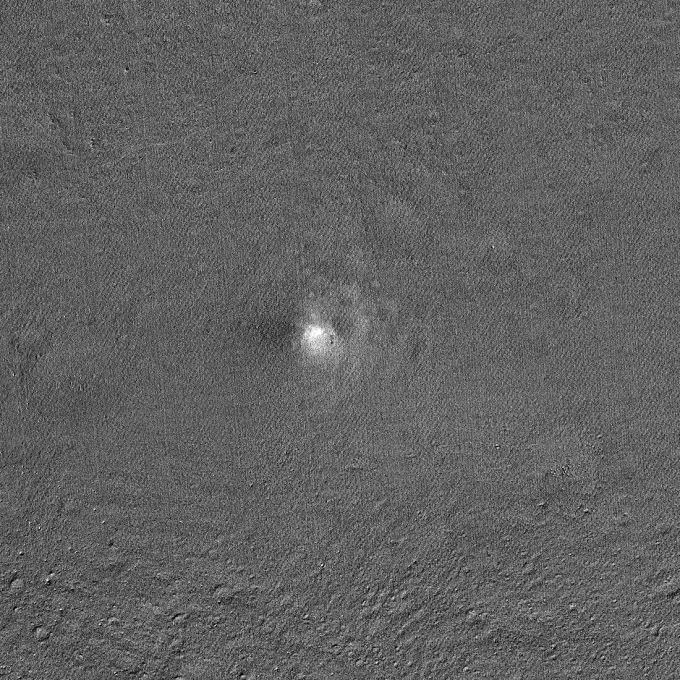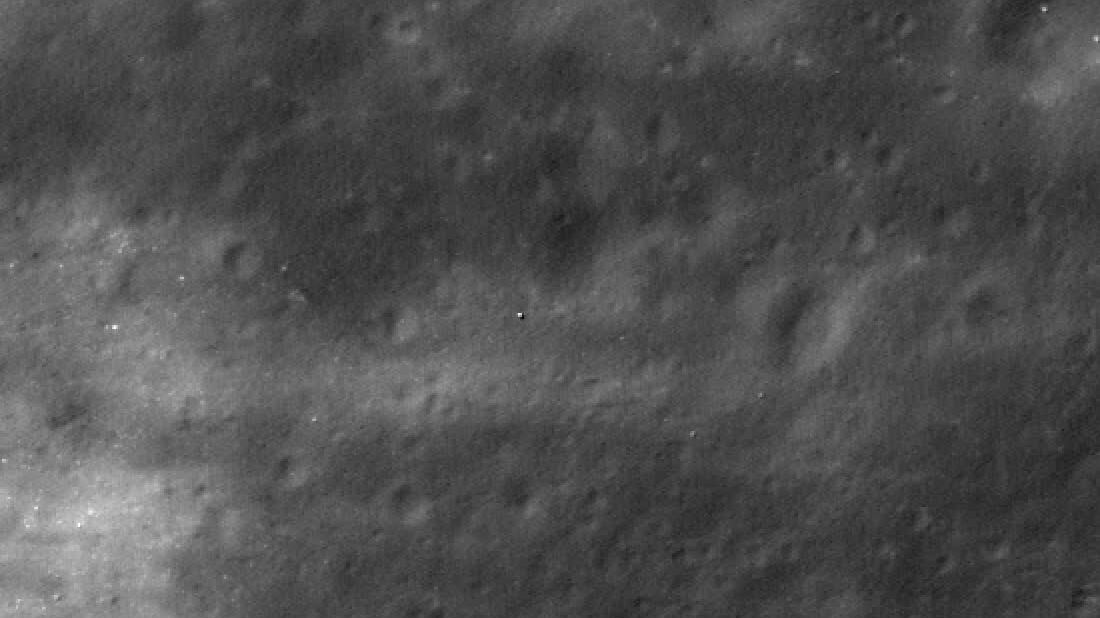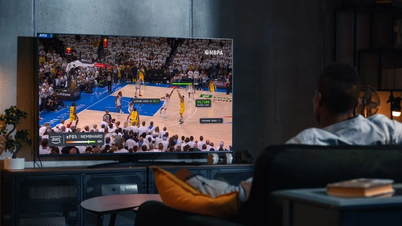From an orbit 80 km above the Moon's surface, the LRO detected Japan's 2.4 x 1.7 x 2.7 m lander.
Images of the lunar surface before and after the SLIM landing (small dot in the middle of the image). Video : NASA/Goddard/Arizona State University
NASA's Lunar Reconnaissance Orbiter (LRO) spotted Japan's Smart Lander for Lunar Investigation (SLIM) on the lunar surface after its historic landing on January 19, making Japan the fifth country to land a spacecraft on the celestial body.
SLIM is a small spacecraft, 2.4 meters high, 2.7 meters long and 1.7 meters wide. It weighs 700 kilograms at liftoff, but fuel accounts for about 70 percent of its weight. SLIM is aimed at a crater where the mantle – the deeper layer of the Moon, usually below the crust – is exposed. By analyzing rocks there, JAXA hopes to unravel the mysteries of the Moon’s potential water resources, which are key to building bases on the celestial body.
From its orbit about 80 kilometers above the lunar surface, LRO saw SLIM at the landing site of the lander. "The bright streaks on the left side of the image are rocky material ejected from Shioli, a relatively young crater nearby," NASA's Goddard Space Flight Center, which manages LRO, said on January 26.
NASA images show the SLIM landing site before and after the mission. In a composite image, experts removed the similarities between the before and after images. This allowed them to clearly see changes in the lunar surface’s reflectance caused by the lander’s engine exhaust.

Composite image shows changes in the brightness of the lunar surface caused by the lander's engine exhaust. Photo: NASA/Goddard/Arizona State University
SLIM was nicknamed Moon Sniper for its precision. The Japan Aerospace Exploration Agency (JAXA) aimed to land it within 100 meters of its designated location, much smaller than the usual range of several kilometers. The spacecraft achieved this goal by landing about 55 meters from its designated location. However, a landing error caused it to land upside down.
Because of its landing orientation, SLIM is currently unable to generate electricity from its solar panels, meaning the lander is completely dependent on batteries. JAXA disconnected SLIM's batteries just before 1 a.m. on January 20, with about 12 percent power remaining, to avoid hindering future restarts. If sunlight hits the Moon from the west, JAXA believes there is a chance for the batteries to generate power and the lander to resume operations. "Based on current estimates, we are preparing for the resumption of lander operations around February 1," JAXA said.
Before remotely shutting down the lander, mission control received visual and technical data from the landing and from the lunar surface. The two small robots that SLIM carries were also successfully deployed. One is equipped with a transmitter and the other is designed to move around the lunar surface and send images back to Earth. On January 25, JAXA released the first real images of SLIM and the lunar surface.
Thu Thao (According to Space )
Source link








































































































Comment (0)